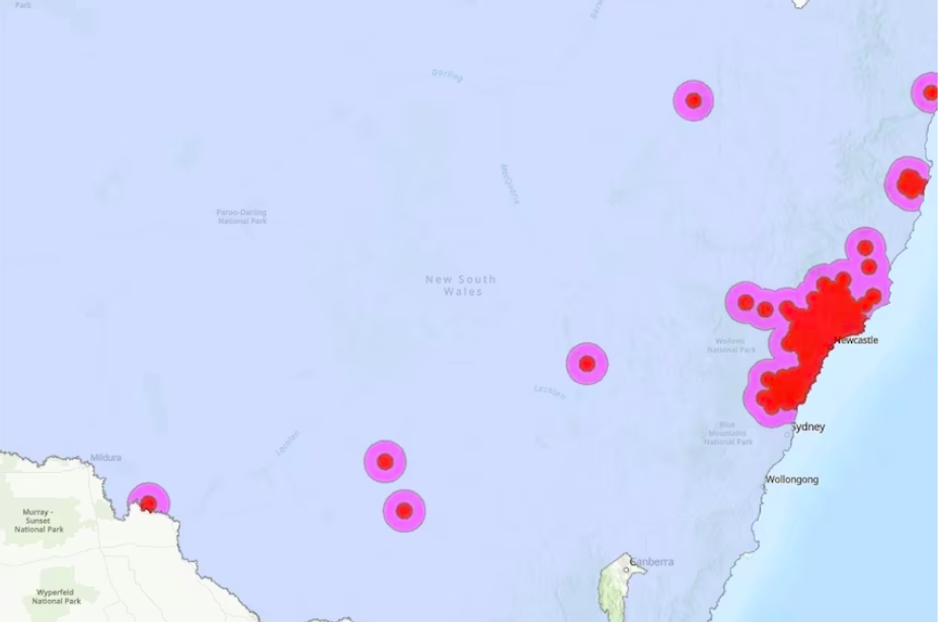Australia has long been the only inhabited continent free from the parasitic Varroa mite. That all changed in June 2022, when Varroa was discovered in the port of Newcastle, just north of Sydney.
The response from the New South Wales Department of Primary Industries (NSW DPI) was fast and strong. A National Management Group (NMG) was formed to lead the offensive and a $132 million response plan was approved. The plan aimed at eradicating the Varroa mite and included:
- The destruction or decontamination of affected hives and equipment
- Surveillance and management plan for wild European honey bees
- Eradication and proof of movement activities until June 2026
Despite these efforts, the Varroa mite had been discovered outside the original containment areas near the NSW central coast, in inland regions dotted around the state. By August 2023, there were approximately 1.73 million hectares in eradication (red) zones. Varroa had been found as far as Nericon in the Riverina region and Euston on the Victorian border.

It was these findings that lead many in the industry to call for a change of tactics. Crop Pollination Association of Australia president and beekeeper Steve Fuller had been advocating for a change in strategy for months.
"We have not made any dent in the eradication in the Newcastle cluster. It keeps growing, so it's only fair to say, 'Look, if you can't make eradication in one area within 15 months then we need another plan, we need to go to management'," he said.
On 19th of September, the NMG made the decision to change tactics from eradication to management. Initially this requires a transitional plan, with compulsory monitoring and reporting.
For beekeepers that means no more mandatory colony euthenisations in the eradication zones (red) zones and no more surveillance (purple) zones. Instead they will establish suppression zones (yellow) and management zones (green). Hive testing within these zones is still required, and all plans to move hives must be submitted to the Department of Primary Industries. Beekeepers are also required to perform 3 alcohol washes per year, at least once every 16 weeks and to report the results.
The news is bitter-sweet. As more than 65 percent of Australia's horticultural and agricultural crops rely on honey bees for pollination, there is a lot depending on this decision. While many feel the change is a pragmatic approach to a seemingly impossible task, it is not the result anybody wanted. It is estimated that the establishment of the Varroa mite in Australia could result in losses of $70 million a year.
For NSW beekeepers wanting to learn more about the transitional plan, please see: https://www.dpi.nsw.gov.au/emergencies/biosecurity/current-situation/varroa-mite-emergency-response